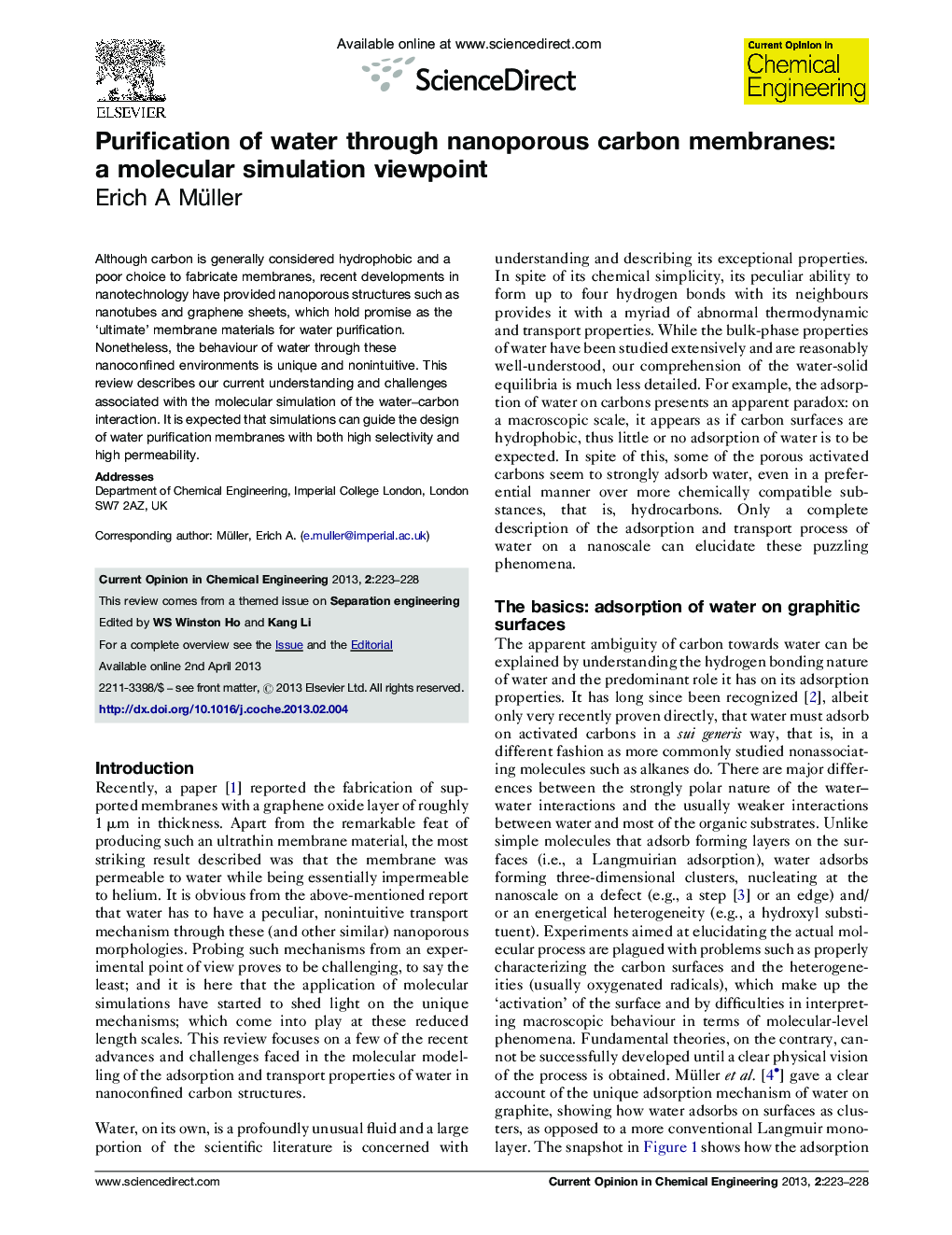| Article ID | Journal | Published Year | Pages | File Type |
|---|---|---|---|---|
| 10266313 | Current Opinion in Chemical Engineering | 2013 | 6 Pages |
Abstract
Although carbon is generally considered hydrophobic and a poor choice to fabricate membranes, recent developments in nanotechnology have provided nanoporous structures such as nanotubes and graphene sheets, which hold promise as the 'ultimate' membrane materials for water purification. Nonetheless, the behaviour of water through these nanoconfined environments is unique and nonintuitive. This review describes our current understanding and challenges associated with the molecular simulation of the water-carbon interaction. It is expected that simulations can guide the design of water purification membranes with both high selectivity and high permeability.
Related Topics
Physical Sciences and Engineering
Chemical Engineering
Chemical Engineering (General)
Authors
Erich A. Müller,
